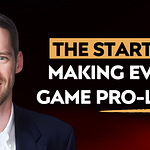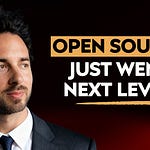Imagine you’re at a buffet where half the dishes are behind a velvet rope. You can see them—private equity, venture funds, secondaries, slick CRE deals—but there’s a sign: “Accredited Investors Only.” Most people either walk away or hop the rope blindly. Both are bad strategies.
In this conversation, Leyla Kunimoto—co-founder of Accredited Investor Insights—opens the rope, explains what’s actually on the table, and hands you a fork and a checklist. If you’re curious about alternatives but allergic to hype, this is your field guide.
The Big Picture: Access Is Rising, Asymmetry Still Rules
Over the next decade, more retail capital will be invited into private markets through friendlier wrappers (target-date funds, interval funds, feeder platforms). That’s the access story. The catch? Information remains uneven. Pros look beyond glossy decks: position sizing, manager selection, reporting quality, and exit pathways matter more than any single “hot” thesis.
Translation: It’s becoming easier to get in; it’s not getting easier to be good.
What Leyla’s Learned the Hard Way
Diligence ≠ Googling. Real diligence feels like investigative journalism: triangulate sources, verify track records, and separate marks from money.
Illiquidity bites twice. You pay a time tax (can’t exit) and a behavioral tax (panic when you want out but can’t). Price that in.
Secondaries aren’t a magic escape hatch. A $50k LP slice is often too small and too fussy to move quickly at a fair price.
Tokenization is plumbing, not pixie dust. Digital rails help with settlement and fractionalization, but they can’t fix bad underwriting or poor reporting.
Concentration is earned. Start diversified while you learn. Concentrate only where you have repeatable edge.
The LP Quickstart Playbook
1) Pick Your Arena (Before Your Deals)
Define your why: return profile, time horizon, risk appetite.
Choose 1–2 core arenas (e.g., early-stage software funds, private credit) and ignore the rest for now.
Draft a 3-year pacing plan: small, regular commitments > sporadic, oversized bets.
2) Underwrite the Manager, Not the PDF
Ask the questions GPs don’t expect:
Sourcing edge: Where do your best deals come from that others can’t access?
Decision evidence: Show me call notes and pre-investment memos from winners and losers.
Portfolio construction: Target # holdings, check sizes, reserves, follow-on policy; what breaks this?
Exit math: Walk me through 3 realized outcomes—how did cash actually return?
Data room reality check: What’s missing and why?
3) Underwrite the Vehicle
Liquidity: Is there any structural liquidity (intervals, periodic tenders)? If not, assume zero.
Fees & waterfall: Where can value leak? Simple beats clever.
Reporting cadence & KPIs: What shows up quarterly, and can I reconcile marks to cash?
4) Underwrite Yourself
Position sizing: Size so a zero doesn’t derail your plan.
Behavioral guardrails: Pre-commit rules for adding, holding, or pausing commitments.
Documentation discipline: Keep a one-pager per commitment: thesis, risks, “kill switches.”
The Diligence Stack (A Simple, Repeatable Flow)
Screen
90-second filter: strategy fit, team coherence, portfolio construction sanity.Corroborate
Reference calls (LPs and portfolio founders), cross-check bios, verify realizations.Stress the model
Rebuild returns with conservative exit timelines, lower multiples, real dilution.Mark-to-cash
Ask: “How do these marks turn into distributions? What would slow or block that?”Decision memo
Two pages, max: why buy, why pass, what would change your mind.
Pro tip: If you can’t summarize the edge in two sentences, you don’t understand it yet.
Illiquidity: Feature, Bug… or Both?
Feature: Can protect you from yourself; forces long-term compounding.
Bug: Blocks rebalancing when you need it most; amplifies regret.
Answer: Treat illiquidity like a mortgage—carry it only if the asset pays you for the inconvenience and you can service it during storms.
Secondaries & Tokenization (Sans Fairy Dust)
Retail-sized secondaries often fail to clear because trade costs, verification, and buyer diligence don’t scale for small tickets.
Tokenization improves transfer mechanics but doesn’t conjure buyers or fix messy cap tables. Think “better pipes,” not “better water.”
Your move: If liquidity really matters, prefer structures with planned windows (interval funds/tenders) or allocate to strategies with shorter duration (e.g., certain private credit).
Concentrate vs. Diversify (The Grown-Up Version)
Early days: Diversify to learn—vintages, managers, and sub-strategies.
Later: Concentrate where you’ve demonstrated edge (domain knowledge, access, or analytic process).
Rule of thumb: Concentration without evidence is just hope with better branding.
The Reporting That Actually Helps
Ask for:
Cohort analysis by vintage and check size.
Reserves & follow-on map (who gets more capital and why).
Attribution: selection vs. post-investment value-add.
Cash reconciliation: capital calls, fees, distributions, net IRR/TVPI explained in plain English.
If a manager can’t produce this, assume they manage stories better than portfolios.
A 30-Minute “First Pass” Checklist
Strategy fit with your plan
Team continuity and decision record
Portfolio construction math (targets, reserves, loss rate assumptions)
Realized case studies → cash paths
Reporting samples you can actually analyze
Liquidity expectations you can live with
Fee stack you can explain to a friend
Your position size ≠ your ego size
Print it. Use it. Update it.
Common Traps (And How to Step Around Them)
Shiny objects: Co-invests and SPVs with unclear risk controls—pass until your base is built.
Mark-driven FOMO: Quarterly marks don’t equal distributions; celebrate wires, not PDFs.
Process drift: Saying yes because you’ve “done so much work already.” Sunk costs don’t improve outcomes.
One-deal heroics: Diversify first; earn concentration.
If You Remember One Thing
Access is widening, but outcomes still reward process over theater. Build a simple, repeatable system for evaluating managers, vehicles, and yourself. Then stick to it when markets get loud.
👂🎧 Watch, listen, and follow on your favorite platform: https://tr.ee/S2ayrbx_fL
🙏 Join the conversation on your favorite social network: https://linktr.ee/theignitepodcast
Chapters:
00:01 Welcome & what Accredited Investor Insights does
00:31 Leyla’s path: public to private markets
02:18 The “real estate gateway” to alternatives
04:24 Why accreditation limits exist
05:36 The likely future: a knowledge-based accreditation test
06:28 Alternatives inside retirement accounts (via target-date funds)
08:59 Why $50k secondaries rarely clear
10:17 Tokenizing LP interests: promise vs. verification
14:54 Misconceptions to unlearn about private markets
16:57 Illiquidity explained (vs. REITs)
21:03 The retail LP diligence gap
25:42 Concentration vs. diversification: earning the right to concentrate
Transcript
Brian Bell (00:01:03): Hey, everyone. Welcome back to the Ignite podcast. Today, we’re thrilled to have Layla Kunimoto on the mic. She’s a co-founder of Accredited Investor Insights, a platform helping LPs and high net worth investors navigate private markets with more clarity. Layla writes and speaks about how accredited investors can better understand private placements, commercial real estate, and venture funds. Pretty relevant for this podcast, cutting through the jargon to focus on what really matters. Thanks for coming on.
Leyla Kunimoto (00:01:28): Thank you for having me, Brian.
Brian Bell (00:01:29): So I’d love to get your backstory. What’s your origin story?
Leyla Kunimoto (00:01:31): Yeah, so I have a background in finance. I have been investing since I was 19. I’ve been investing in public markets for a very long time. And then in 2020, about five years ago, I discovered private placement. I kind of stumbled into it, and it captured my attention. It was very interesting to see how differently things are presented to investors, how big of a gap there is between what investors know and the information they get. I dove head first and had a lot of conversations. I’ve had thousands of conversations with other LPs, hundreds with GP service providers. In early 2024, a friend of mine and I decided to take this information public and share what we had learned. The friend has since departed and gone on to other things, so I inherited Accredited Investor Insights. What we started doing was writing about our experience. What’s been interesting is to see this grow and capture a lot of different audiences. I thought the biggest audience would be limited partners, and it was for a while. And now our newsletter is read by fund managers, wealth advisors, RIAs, investors—anybody in the ecosystem.
Brian Bell (00:02:55): That’s amazing. What was that aha moment where you’re like, private placements, let’s look into this?
Leyla Kunimoto (00:03:01): My gateway drug was real estate. In 2020, real estate prices were high. A lot of things didn’t pencil, but I saw that economies of scale in private placement allowed GPs to go out and buy much bigger properties, syndicate them, raise investor capital, and bring that to retail investors. Instead of owning something 100%, an investor can own a small slice of a much bigger pie. The bigger pie has very different economics versus a smaller one. It was interesting, and I thought there was an opportunity to exploit that inefficiency. Of course, it’s less efficient than public markets. In public markets, you have thousands of eyes looking at financials—let’s say, publicly traded REITs. In private markets, you do not. The downside of private markets is the lack of information, and that’s what creates that imbalance.
Brian Bell (00:04:12): There’s an information asymmetry in private markets, right? Which is why you have to be accredited or a qualified purchaser. You have to have a certain level of wherewithal to understand what you’re doing enough that you’re not going to lose your money, which is why I think those accredited investor laws were put in place almost a hundred years ago. People in the ’20s were going into their local Charles Schwab or whatever it was on the corner—which was like every block in New York, I guess—and you could buy stock on margin, and everybody just lost their shirt.
Leyla Kunimoto (00:04:44): This is exactly it, and you hit the nail on the head. As much as I don’t like excessive regulation, I think those restrictions exist for a reason. These are bigger numbers and higher risks of losing your principal. I think it’s good to restrict access a little bit to people who maybe don’t have enough capital to be placing those larger, riskier bets.
Brian Bell (00:05:13): You know what’s wild? Anybody can just walk into a casino and lose thousands, tens of thousands, even hundreds of thousands of dollars—and we let that happen—but somehow we’re not letting people invest in asset classes that the rich get richer in, right? Which is usually private equity, venture capital, private real estate, and other forms of investment. So it would seem that we need a licensing system. I think Jason Calacanis has been calling for this for years now—why couldn’t you just go take a test? Like, you have to take a test to drive a car, so take a test to invest. A test to invest.
Leyla Kunimoto (00:05:48): It’s coming. I wouldn’t be surprised if in the next couple of years we do have a test the SEC comes up with.
Brian Bell (00:05:56): And we technically do, right? The Series 65, I think you could take—it’s a four-hour test, which is pretty onerous. Imagine having to take a four-hour test to drive a car. It’s a little much for the average person. But some shorter “accredited investor test,” maybe 30 or 60 minutes, testing your knowledge on diversification and other basics, could make sense. How do you think about all that?
Leyla Kunimoto (00:06:29): I think there’s a high probability that a test like that is coming. I also believe there’s another side to this: President Trump signed an executive order a couple of months ago that will allow access to private markets inside 401(k)s—private markets, crypto, alternative investments.
Brian Bell (00:06:53): That’s huge.
Leyla Kunimoto (00:06:53): Yeah, that’s big. Because now there’s been sort of a wall, right?
Brian Bell (00:06:58): You have to flip it to a self-directed IRA, which is a pain. It’d be way better if I could just log into Fidelity and say, “This is what I want to invest in,” and Fidelity checks: “Hey, maybe don’t put 100% of your portfolio into this one real estate deal,” right? It doesn’t even take AI to get that—just don’t do that.
Leyla Kunimoto (00:07:22): A little caveat: it’s not going to be that simple. In 401(k)s, the most likely scenario will be target-date funds where a small percentage—probably under 20%—gets allocated to private equity or private credit. I think we’re still quite a ways away, though. But imagine this scenario: I have interest in a private real estate deal and need liquidity. Let’s say it’s a $50,000 minimum investment. You want to buy it. Right now, there’s no platform for us to transact that small an interest. There are platforms for million-dollar secondaries, but selling a $50K stake is cost-prohibitive.
Brian Bell (00:08:38): You’re talking about a secondary for a private company.
Leyla Kunimoto (00:08:41): Exactly.
Brian Bell (00:08:44): Yeah, we’re doing secondaries now. They’re hot—especially for late-stage unicorns. But closing a secondary is non-trivial. It’s complex for a little 50K check.
Leyla Kunimoto (00:09:04): For a 50K check, it’s really difficult. But I do think that’s going to get solved, probably on blockchain. Once that’s solved, small retail investors will gain trading ability—and that’s going to be huge. I’m very excited about that. If we have any visibility into what’s inside that LP interest, and I can buy a fractional stake in something like SpaceX or OpenAI for $10,000, that benefits both sides. Whoever solves that will make a lot of fees and open up the entire market.
Brian Bell (00:10:19): Why do you think blockchain is necessary here? We already have systems with intermediaries like NYSE and NASDAQ that could facilitate this without blockchain. Why is it needed?
Leyla Kunimoto (00:10:33): The only other option is listing on the public exchange, which is expensive and infeasible for small holders like employees with modest amounts of shares. Blockchain allows cost-efficient micro-transactions of private stakes.
Brian Bell (00:11:04): Gotcha. But who verifies what goes onto the blockchain—that it’s authentic, signed off by the company, and not subject to a right of first refusal? Blockchain is just a distributed ledger. Why not just use centralized ones?
Leyla Kunimoto (00:11:33): All good questions. I don’t have a good answer yet. We’ll see.
Brian Bell (00:11:37): That’s always my question when investing in blockchain—why does it need to exist this way? Founders often say, “It’s more secure.” Great, but who verifies it? Garbage in, garbage out—whether on blockchain or a NASDAQ ledger, someone must police it. It’s like buying a house—you need escrow, title, insurance, verification. So I think until everything’s fully digitized, we’ll need that bridge verifying what goes on-chain.
Leyla Kunimoto (00:12:36): Exactly. The source information must be bulletproof. Blockchain is the “how,” the pipes connecting houses. But the water—what flows through those pipes—must be verified as clean. So the key is trusting the source. If we trust it, we’ll transact all day long. But verifying every source might be costly.
Brian Bell (00:13:30): Huge. So when you look back, as you’ve been in this now for years, what misconceptions did you have early on about private markets that you had to unlearn?
Leyla Kunimoto (00:13:46): I thought that by knowing the universe, you could create a little bit of an unfair advantage over your competition just by having more knowledge. It’s not quite so simple. It is true that in public markets, it’s much harder to find those pockets where it’s imbalanced. But what’s also true in public markets is you can find times when sentiment is just bad. Okay, regional banks — I’ll give you a recent example. Last Friday, you couldn’t sell regional banks if you wanted to. Nobody wanted those things. But then it’s overblown, right? And the next day we have a correction. When you have a lot of information about a certain space, you have those opportunities in the public markets, whereas in private markets, you do not. Marks are marks. They get updated once a quarter if you’re lucky, or never until the deals are sold. You are what you owe. It is what it is. Another big thing I learned — private markets are illiquid. The appreciation for liquidity came to me after I had a certain amount of money allocated to private markets. There are certain deals I would love to exit right now. I would love to take a haircut and exit, but I can’t. I’m stuck until those deals exit.
Brian Bell (00:15:15): Just give us an example. You don’t have to name the company name, but give us the mechanics of it.
Leyla Kunimoto (00:15:19): Let’s say I’m invested in a fund that holds a bunch of assets — let’s say real estate, and the fund owns ten different apartment buildings. Knowing what I know today, would I have allocated to that fund? No. And let’s say the valuations are down 25%. I’d love to sell that. That information came out quickly after allocating to the fund. If I’d been in a publicly traded REIT holding similar assets, I could’ve pushed a button in my brokerage account and sold the shares, taken the haircut, and redeployed. With a private real estate fund, I don’t have that button. I have to wait until the fund sells those assets and liquidates the portfolio for me to get the money back.
Brian Bell (00:16:09): So you’re an LP in a fund. A GP controls when you get liquidity. It’s hard to sell an LP interest in a fund because it’s virtually impossible. The GP would have to help do that, all the other LPs would get first right of refusal, and even if you’re able to sell, you’ll take a huge haircut. Let’s say the fund’s up 2x — you might get 1.25x back, if you can even find a buyer and the GP approves and all LPs pass. It’s a very interesting model. But what it does do — and this is why I think private markets outperform public ones and why endowments put 40% of their funds into PE and VC — is that it creates long-term thinking. The problem with public markets is you can always generate liquidity, which drives short-termism. That’s why companies don’t want to go public — regulations, quarterly calls, constant pressure. With long-term funds, like venture capital, pre-seed and seed, when I talk to LPs, they ask, “When do I get liquidity?” and I tell them — a very, very long time. Seven, ten years. It takes a really long time.
Leyla Kunimoto (00:17:41): It’s an important thing. A lot of LPs hear that but don’t quite process it. A lot can happen in seven years — recessions, margin calls, liquidity squeezes. When LPs allocate money to a private fund, especially venture capital or private equity, there are no expected distributions for years. That J-curve takes a long time. It’s critical to understand: there is no button to push, no secondary sale. You are stuck. There are benefits — it forces your hand.
Brian Bell (00:18:42): What are some of the other gaps that you’ve identified and are covering with your writing and analysis?
Leyla Kunimoto (00:18:48): Huge information asymmetry — and it’s insurmountable. And frankly, a lot of LPs I know are retail LPs, like me. I don’t work for an endowment. I don’t have a legal team checking my work. Many people in my boat allocate based on thesis alone — “I think AI is the next big thing, so I’ll go find funds investing in AI.” LPs don’t have the ability to do very deep diligence, and there’s nothing really to help solve that. I think that’s the biggest gap. It helps if you have background in what you’re investing in. If you’ve started companies or had successful exits, allocating to venture capital makes sense because you understand that space. Real estate investors allocate to real estate funds because they know it. The biggest mistakes I see are people allocating to areas they know nothing about — for example, a tech founder saying, “I’m going to diversify into real estate,” without knowing the domain. Those investors are often in for surprises. Education is the only cure.
Brian Bell (00:20:38): How do you think about that as you write? Your audience is LPs, GPs, and everyone in between. But say someone made their money in startups and now wants to allocate to real estate. Would you advise — and of course, this podcast is not investment advice — would you say maybe avoid individual deals and instead invest through a fund with a proven GP? How should LPs think about that?
Leyla Kunimoto (00:21:07): None of this is investment advice, and I don’t advise LPs — that’s not my business model. But if I were allocating to something I knew little about, say biotech, I’d look for funds that are well-diversified within that industry. I’d focus on diversification and on the fund manager’s experience in that space. The biggest risk when you don’t know an industry is getting wiped out. One-off deals have a much higher probability of loss than a diversified portfolio. If you have ten deals, and seven go to zero but three return 10x, you’re fine. Concentrated bets should only be made with strong conviction — and that conviction only comes from knowledge.
Brian Bell (00:22:33): Gotcha. Well, how would you reply to Warren Buffett, who said diversification is for suckers or losers?
Leyla Kunimoto (00:22:40): Warren Buffett’s famous advice to his widow was to put all the money in the S&P 500 and do nothing. Diversification is for suckers because you can’t outperform the market if you’re the market. If you’re only allocated to the S&P 500, your returns are the S&P 500. But if you know a lot about Tesla, for instance, and you’re confident, then yes — concentrate there, because that’s the only way to beat the market. If you know nothing about something, you’re equally likely to get wiped out. So being diversified and earning 5–8% is better than concentrating and going to zero. Avoid zeros. It’s simple math.
Brian Bell (00:23:40): This is what I tell my LPs. They’ll say, “I’ll just invest in my own startups.” I ask: How many deals? How many decks will you review? How many meetings will you take? To invest in 100 startups, you probably have to look at 10,000. You need that scale to be diversified. Real estate requires less, public equities even less. LPs don’t always appreciate that. If you don’t know the space — real estate, private equity, venture capital — as your full-time gig, you’re probably missing alpha. You’re better off hiring someone who does. But if you’re an expert — like in electric cars and the Tesla supply chain — then sure, overweight there. Just don’t put more than 20–30% of your assets into any one class. Definitely don’t concentrate in stuff you don’t know.
Leyla Kunimoto (00:24:50): Not concentrating on stuff you know nothing about is probably the best way to avoid nasty surprises down the road.
Brian Bell (00:24:58): So what do you think the next decade looks like in the LP ecosystem?
Leyla Kunimoto (00:25:03): The next decade is exciting. LP access to private markets will expand. The number of publicly listed companies is going down — companies are staying private longer. That has pros and cons. The downside is opacity: we know almost nothing about private companies. You can allocate to a big-name PE fund, but all you’ll see in SEC filings is “Total revenues of our portfolio companies are X; total net profit is Y.” No KPIs, no growth rates, no margin expansion — nothing. That’s a huge disadvantage. Some GPs do a fantastic job of communicating performance to LPs, but they’re rare. When you see those detailed quarterly reports, it’s beautiful — “Here’s how our portfolio companies are performing; here’s the quarter-over-quarter growth.” LPs should demand that transparency, even though it’s costly for GPs. It lets LPs see which GPs got lucky versus those with real skill in picking winners.
The next decade will also bring more change: large asset managers — KKR, Blackstone, Goldman Sachs — are all rolling out retail-facing products. High-net-worth investors are getting bombarded with offers. The lower middle-market GPs need to be aware of that. As an LP, I now have options I didn’t have five years ago, and in five years, I’ll have even more — backed by billion-dollar marketing budgets and decades-long track records. Smaller or newer GPs need to adapt — message clearly, differentiate, and communicate what sets them apart from the generalist giants.
Brian Bell (00:27:48): Gotcha. Well, where can folks find out more about you online and subscribe to your newsletter?
Leyla Kunimoto (00:27:53): I’m on Twitter and LinkedIn as Layla Kunimoto. My newsletter is at accreditedinsight.com, and I’d love to have people subscribe. Thank you.
Brian Bell (00:28:06): Awesome. Well, thanks for coming on. Really appreciate it.
Leyla Kunimoto (00:28:08): Thank you, Brian. Thanks for having me.







